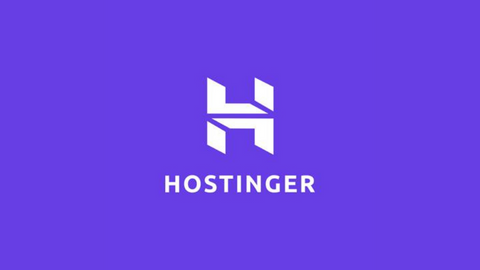Learn how to optimize Shopify performance and reduce bounce rates in this post.
Optimizing Shopify’s” performance and reducing bounce rates are common concerns for most e-commerce businesses.
A common concern for most eCommerce businesses is how to increase their conversion rate and reduce bounce rates.
When optimizing Shopify’s” performance, it is essential to consider both the user experience and the overall performance of your website. Bouncing visitors make up a significant portion of your website’s traffic, so usability must be a priority for all Shopify stores.
The following are some essential tips that can help to do Shopify performance optimization and reduce bounce rates:
- Ensure that your site loads fast
- Optimize your images
- Reduce the number of product variations
- Please keep it simple
READ ALSO: TikTok Marketing Methods: 7 Tricks To Boost TikTok Ad Campaigns
TOP DEALS
Table of Contents
How To Optimize Shopify Performance And Reduce Bounce Rates
Shopify is a popular e-commerce platform. It offers a wide range of tools for business owners and customers. One of the most important things to consider when using Shopify is optimizing your performance and reducing bounce rates.
First, you should ensure that your store looks neat and attractive to potential customers. This can be done using sound design, beautiful images, and clear navigation options.
The next step would be to provide enough information about your products so customers can understand them easily. This will increase their chances of purchasing because they will feel satisfied with what they have found on your website.
A customer’s first impressions are often their most lasting. Many companies and industries have recently struggled to develop effective customer-centric marketing strategies. The shift towards customer engagement is giving a lot of businesses a chance to build stronger, long-lasting relationships with customers.
3 Ways to Increase Shopify Conversion Rates
With the increased competition in the e-commerce industry, retailers need to improve their conversion rates.
Retailers can do this by implementing three different strategies:
1. Craft a Crystal-Clear Value Proposition
Your value proposition is the heart and soul of your brand, articulating what makes you unique and why customers should choose you. Please don’t leave it to chance! Craft a concise, impactful statement that instantly resonates with your target audience.
Highlight the problem you solve, the benefits you offer, and what sets you apart from the competition. Remember, clarity is king.
Please focus on the core value you deliver and communicate it in a way that resonates emotionally with your ideal customer.
READ ALSO: $255 Payday Loans Online – What Is The Easiest Option To Get?
2. Design Compelling Offers with Added Value
Price alone isn’t enough to win today’s savvy shoppers. You must go beyond price competition and create irresistible offers that deliver tangible value.
Consider bundling complementary products, offering free shipping thresholds, or introducing loyalty programs.
Create a sense of urgency with limited-time deals or flash sales. Remember, value isn’t just about discounts; it’s about exceeding customer expectations and building trust.
3. Craft Enticing Calls to Action (CTAs)
Your CTAs are the final nudge that guides visitors toward conversion. Don’t settle for generic “Buy Now” buttons. Craft targeted CTAs that are clear, concise, and action-oriented. Use persuasive language that aligns with your offer and value proposition.
Experiment with different CTA colors, placement, and wording to see what resonates best with your audience.
Remember, a strong CTA should be impossible to ignore, seamlessly guiding visitors toward the desired action.
A better customer experience will help you increase your sales
Shopify is a software company that provides tools to help you sell more online. They have a comprehensive suite of tools that help you create, manage, and grow your ecommerce store.
The customer experience is the foundation of any business. It is the first impression people get when they visit your store and sets the tone for their interaction with your brand.
There are many ways to improve your customer experience and increase sales simultaneously. These include:
- Providing a better shopping experience
- Building trust with customers by giving them discounts, free shipping, or other incentives
- Providing them with what they want when and where they want it
How To Optimize Shopify Performance: Frequently Asked Questions
What are the most significant factors affecting Shopify’s performance and bounce rate?
Several factors contribute to poor performance and high bounce rates:
- Slow Page Load Speed: Nobody likes waiting. Aim for a page load speed under 3 seconds. Use tools like Google PageSpeed Insights to identify and address bottlenecks like large images, unoptimized code, and server issues.
- Poor Mobile Experience: Over half of online traffic comes from mobile devices. Ensure your store is responsive and optimized for all screen sizes, including intuitive navigation and fast loading times.
- Confusing Website Design: A cluttered or overly complex layout can overwhelm visitors. Prioritize straightforward navigation, easy-to-find information, and a visually appealing design that guides users toward desired actions.
- Lack of Trust Signals: Uncertain customers tend to bounce. To build trust and credibility, display customer testimonials, security badges, and clear contact information.
- Hidden Costs or Shipping Surprises: Unexpected charges at checkout can frustrate customers and lead to abandonment. Be transparent about all costs upfront, including taxes and shipping fees.
What are some quick wins for improving performance and reducing bounce rates?
- Optimize Images: Compress images without sacrificing quality to reduce page load times. Consider using a Content Delivery Network (CDN) for faster image delivery.
- Enable Browser Caching: This allows browsers to store frequently accessed data locally, improving subsequent page loads.
- Minimize HTTP Requests: Combine multiple CSS and JavaScript files into fewer files to reduce the number of requests your server needs to handle.
- Simplify Checkout Process: Make checkout quick and easy with minimal steps, guest checkout options, and clear progress indicators.
- Offer Live Chat Support: Address customer concerns promptly and build trust with real-time support options.
What are some advanced techniques for further optimization?
- Personalize User Experience: Utilize customer data to personalize product recommendations, offers, and website content based on individual preferences and browsing behavior.
- A/B Test Different Elements: Experiment with different layouts, CTAs, and design elements to see what resonates best with your audience and drives conversions.
- Implement High-Quality Product Content: Compelling product descriptions, engaging visuals, and user reviews can capture attention and convince visitors to purchase.
- Leverage SEO Practices: Optimize product titles, descriptions, and meta tags for relevant keywords to improve organic search visibility and attract potential customers.
- Utilize Remarketing Campaigns: Retarget website visitors interested in targeted ads on other platforms, bringing them back to your store for conversion.
How can I track and measure the effectiveness of my optimization efforts?
Analytics tools like Google Analytics and Shopify Analytics are used to track key metrics like page load speed, bounce rate, conversion rate, and user behavior.
Monitor the impact of your optimization efforts on these metrics and adjust your approach accordingly. Optimization is ongoing, so continuous analysis and improvement are crucial for long-term success.
READ ALSO: Managing Resources for Business Growth: How to Optimize Your Finances and Personnel
Conclusion: How to Optimize Shopify Performance
In conclusion, there are several ways to optimize Shopify’s performance. The first step would be to ensure that your Shopify store is optimized for conversions.
That’s why you need fantastic UX design. The next step would be to ensure you have the right tools to monitor your store’s performance.
By implementing these strategies, tracking your results, and constantly adapting, you can optimize your Shopify store for performance and significantly reduce bounce rates. This will lead to happier customers, more conversions, and a thriving online business.
INTERESTING POSTS
- A Beginner’s Guide to System Optimization
- How DeFi Tools Are Evolving As Adoption Takes Place
- How To Reduce Operation Cost By Managed Service
- Antivirus Best Practices For Complete Cybersecurity
- 6 Steps To Optimize Your Network For VoIP
- Optimize Your PC With IOLO System Mechanic Ultimate Defense
- How To Write A Research Paper Introduction (Cybersecurity)
- 6 Ways To Optimize Your DevOps Team Productivity
About the Author:
Daniel Segun is the Founder and CEO of SecureBlitz Cybersecurity Media, with a background in Computer Science and Digital Marketing. When not writing, he's probably busy designing graphics or developing websites.

















